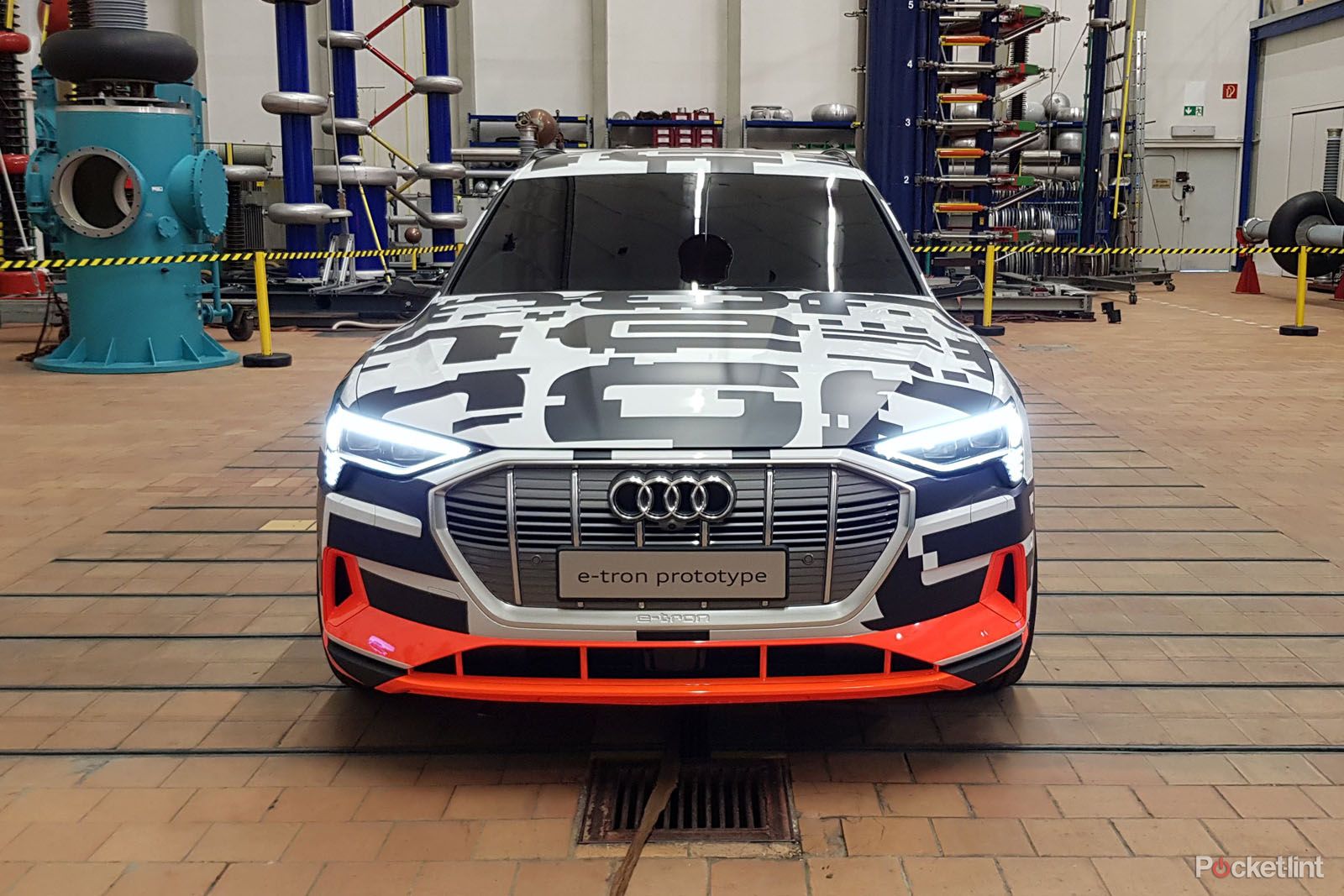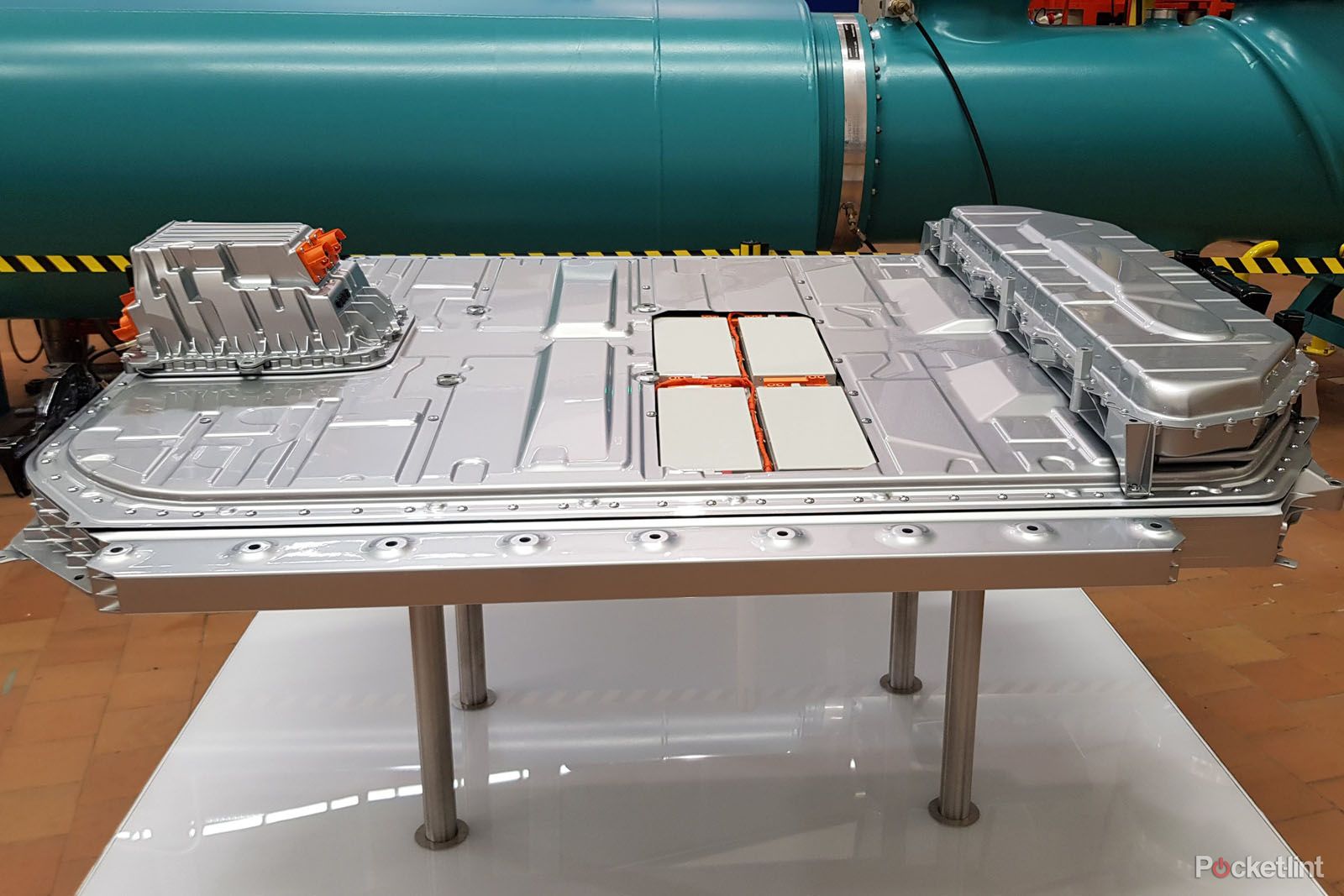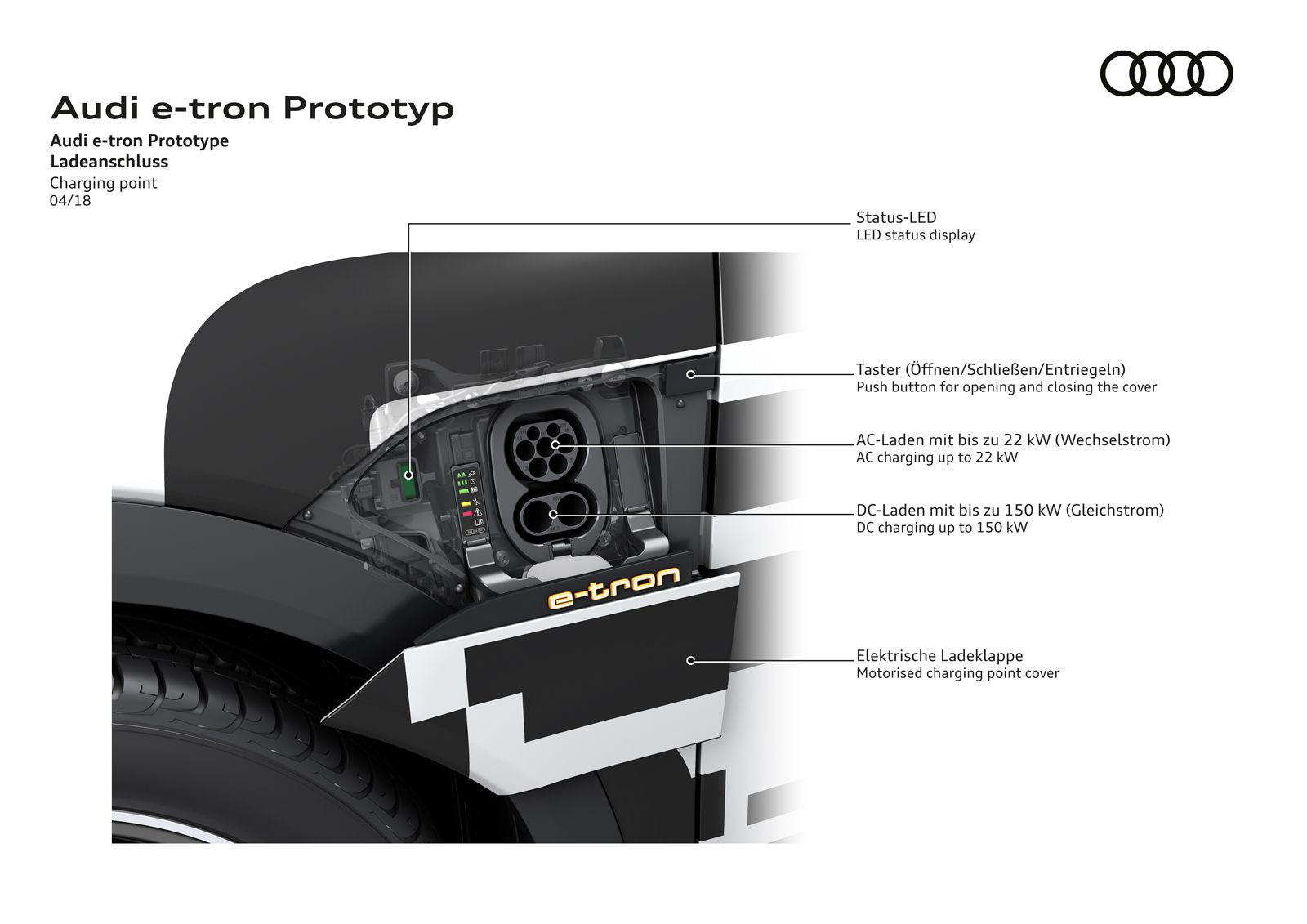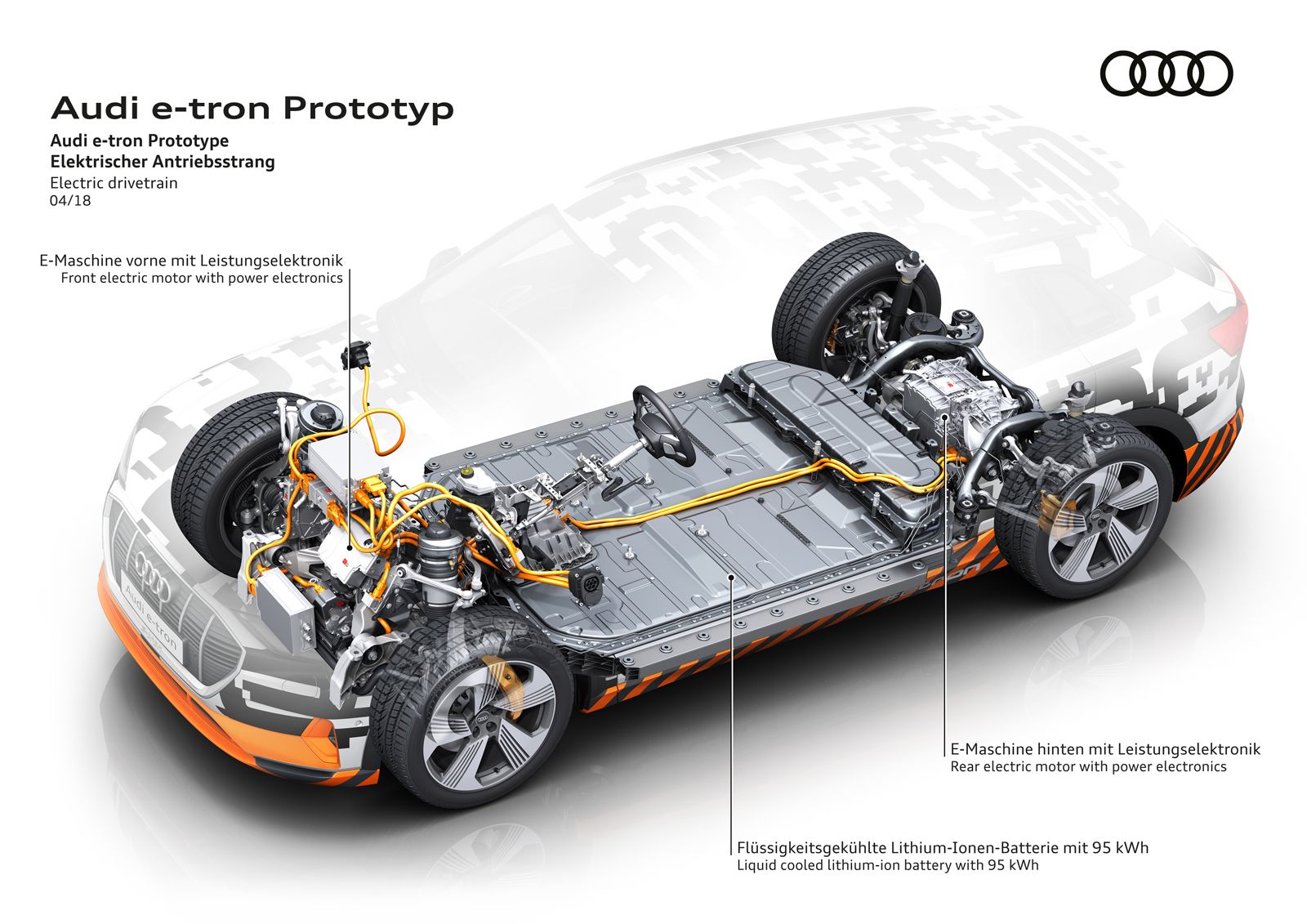Audi has revealed all the details about the battery for its forthcoming Audi e-tron, its first pure electric car. Based on the Audi e-tron prototype, the production version of the car is due to be fully revealed later in 2018 for delivery in Europe before the end of the year, marking the start of Audi and wider VW group cars' electrification.
Prepare yourself for some technical details, as we're going to run you through the essential details about the power that's sitting beneath Audi's first electric production car.
Audi e-tron battery tech specs
The Audi e-tron has a huge 95kWh lithium-ion battery that sits under the floor of the passenger cabin between the front and rear wheels. It weighs some 700kg, and sees 36 modules, each housing 12 pouch cells. These pouch cells come from LG Chem. By comparison, the Tesla Model X has options of 75 or 100kWh, while the Jaguar I-Pace has a 90kWh battery.
The modules are housed in aluminium enclosures, with the 36 modules contained within a space frame with protection top and bottom and an internal strengthening lattice to protect against accident damage. Audi is saying it exceeds all safety standards in crash tests.
The entire battery - complete with the control unit - is designed so that it can be removed from the vehicle if needed and individual modules could then potentially be removed or replaced.
But one of the most important parts of the system is the thermal management.
Audi e-tron battery thermal management
Battery performance is dependent on optimal conditions and Audi has an integrated thermal management system built into the battery: it's liquid cooled or liquid heated.
Like the heat sink on a computer processor, there's a system of aluminium microport channels that are thermally bonded to the bottom of the battery modules to provide cooling or heating of the battery as necessary.
The system circulates coolant through the battery and, via a radiator in the nose of the car (as a normal car cools), this will deal with heat under low load. A secondary system with a chiller module can be used for more aggressive cooling. This system can also be reversed to act as a heat pump to raise the battery temperature too.
The optimal temperature for the battery is between 25 and 35 degrees centigrade and this is what the cooling system provides, so whether its -10 or +40 outside, the performance of the battery shouldn't be affected. In cold conditions, when the e-tron is connected to the power, the battery will be kept within the optimal temperature range.
Super-fast 150kW charging
Keeping the battery temperature under control is important for two reasons. Firstly, it allows consistent performance. The battery will produce heat under load and some electric cars will see performance drop off or get limited - for example - with routine hard acceleration. Keeping the battery cool means the performance can be more consistent.
But the thing that's likely to turn heads is the fast charging that Audi is enabling on the e-tron, at 150kW. This is the fastest charging on an electric car yet, letting Audi put 80 per cent charge into this massive battery in 30 minutes. While many manufacturers will state similar figures, consider that this battery is 95kW, so it's bigger than many.
Keeping the battery cool while this rapid charge is delivered is essential and the thermal management system has a big part to play here too. Any why is it only charging to 80 per cent? Because that top 20 per cent is designed to slow charge - it's better for long-term battery health and performance.
Naturally the 150kW charging is direct current (DC) and Audi is part of the Ionity initiative to boost the charging infrastructure across Europe to enable this charging rate, with some 200 charging points to be installed by the end of 2018 on major transit routes and continued future expansion.
The e-tron will also support 11kW AC charging which is what most will likely use at home or through existing public AC charging points. It will charge at 2.3kW off a standard domestic plug (provided) but with 8.5 hours needed for an 11kW charge using the supplied Compact charger, you'll probably want to make sure you have an industrial 400V socket available for easy home charging.
There will be a step-up option to double this to 22kW charging - although you'll have to pay for this - as it will need a second charger physically adding to the car. This will work with the Connect charger and opens up a few smarter options for closer charge management as it will potentially put quite a demand on your domestic supply - but see charging times drop to 4.5 hours.
The car itself will be equipped with a CCS type socket, which Ionity is pushing as the standard across Europe. This will handle both AC and DC charging, with the top section accepting a type 2 connection, common on many public chargers in the UK, for example. there will be the option to have a second charger on the e-tron on the other side - although this is only really for convenience, will be AC only and will cost you more.
As a point of comparison, Tesla's Supercharger offers 120kW charging with a bespoke connector, while the Jaguar I-Pace will charge at 100kW, also using the CCS connector.
Audi e-tron battery range
So what does this all result in? Audi has said that, officially, the Audi e-tron can achieve 248.5 miles (400km) measured on the WLTP cycle. What this will equate to in real miles for daily drivers on the production car we won't know for some time - but it's clear that Audi wants to address range and charging anxiety.
Audi also hasn't yet said anything about the other performance measures of the car - we know it will have two electric motors - but we're expecting it to drive very much like other Audi Quattro models, so we're expecting a lot of usable power and plenty of speed. The concept reported a 0-62 time of 4.6 seconds and 800Nm torque - but this may well change for the production vehicle.
Will it have a Ludicrous Mode? Audi has already said no - it's an Audi, so will drive and behave like other Audis. We'd expect drive modes, however, and we wouldn't be surprised to find a Sport or Dynamic option within that.
The big pieces of Audi's first electric car are falling into place and with ambitions for cross-European charging through the Ionity network, pan-US charging through Electrify America, electric cars are about to get a whole load more exciting.




